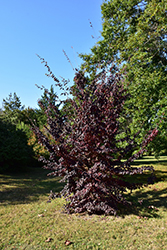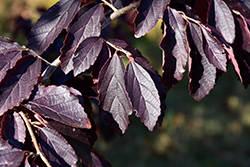It's all about ...
plants

Height: 30 feet
Spread: 30 feet
Sunlight:
![]()
![]()
Hardiness Zone: 7a
Other Names: Chinese Ironwood
Description:
An excellent shrub, or small tree with many ornamental attributes; interesting bark develops gray, green and cream color with age; fall color is a consistent burgundy purple; best with acidic soil, even moisture, and protection from hot afternoon sun
Ornamental Features
Chinese Parrotia has forest green deciduous foliage which emerges burgundy in spring on a tree with an oval habit of growth. The serrated oval leaves turn outstanding shades of deep purple, burgundy and red in the fall. The peeling gray bark and green branches are extremely showy and add significant winter interest.
Landscape Attributes
Chinese Parrotia is a deciduous tree with a shapely oval form. Its average texture blends into the landscape, but can be balanced by one or two finer or coarser trees or shrubs for an effective composition.
This is a relatively low maintenance tree, and is best pruned in late winter once the threat of extreme cold has passed. It has no significant negative characteristics.
Chinese Parrotia is recommended for the following landscape applications;
- Accent
- Shade
- Hedges/Screening
Planting & Growing
Chinese Parrotia will grow to be about 30 feet tall at maturity, with a spread of 30 feet. It has a low canopy with a typical clearance of 2 feet from the ground, and should not be planted underneath power lines. It grows at a medium rate, and under ideal conditions can be expected to live for 80 years or more.
This tree does best in full sun to partial shade. It prefers to grow in average to moist conditions, and shouldn't be allowed to dry out. It is not particular as to soil type, but has a definite preference for acidic soils. It is somewhat tolerant of urban pollution. This species is not originally from North America.
This plant is not reliably hardy in our region, and certain restrictions may apply; contact the store for more information.

